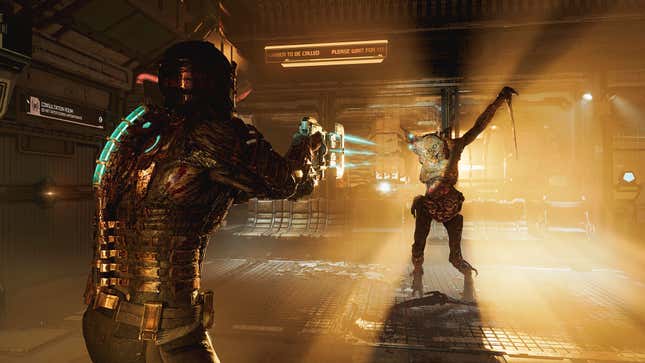If you want more: Games about traveling across the United States, stealth action, intense narrative themes, realtime item and resource management, daddy sims (no, not that kind, jeez)
Notable differences: A sometimes-incomprehensible plot, longer periods of silence and traveling, open-world structure, less emphasis on gunplay
Availability: Windows (Steam Deck OK), PS4, PS5
If you just wrapped Joel and Ellie’s roadtrip across the United States and are in the mood to go West yet again, Death Stranding has another “let’s save the world” journey for you. But this time, you’d better be in the mood for walking. And instead of delivering a girl who might or might not present an opportunity for a cure, you’re gonna be delivering pizzas, old game consoles, frozen eggs and sperm, “high-performance underwear,” medicine, a necklace of USB keys that will connect everyone to the internet yet again, and much, much more.
There’s no doubt about it: Death Stranding is a weird fucking game. Let me attempt to summarize the premise: You are a delivery guy who must travel a world wrecked by the re-emergence of the dead who are only visible when you’re connected to a baby in a jar. You’ll face off against said undead, try to keep your baby calm and happy while also caring for your packages, deal with a Troy Baker-voiced antagonist, and will try to walk away from its overly heady and lengthy narrative with at least some understanding of what the fuck that was all about.
Read More: Death Stranding: The Kotaku Review
All the weird, avant-garde nonsense of its narrative and gameplay aside, Death Stranding is at its core an open world game heavily reliant on item and resource management. You’ll need to use ladders, ropes, 3D-printed bridges and structures, and even some weapons and vehicles in your journey across a seemingly vacant and abandoned United States. Combat is almost always prefaced with stealth, and though you might think delivering packages is boring, the long-stretches of distance you’ll cover, often in silence, offer genuine moments of contemplation and space to think about the game’s winding and eccentric narrative, your own life, whether or not Joel did the right thing by shooting up that hospital, what’s for lunch, etc.
There’s also a Joycean level of interconnected textual depth to Death Stranding. The narrative plays with words that have multiple meanings depending on perspective; and it has some spooky resonance with much of what we’re dealing with in the 21st century in terms of the internet, connectivity, and reliance on one another in society.
Sometimes Death Stranding’s narrative and dialogue sounds like it’s spouting pure gibberish at you; and then a character will drop a single line of dialogue such as “I brought you a metaphor,” or you’ll come across an intriguing email about civilizations and extinctions and, there you go, you just can’t help but think about the direct and indirect meaning of it all for hours on end (especially if you’re stoned).
Just as The Last of Us will give you resonant themes of violence, loss, and togetherness to think about, Death Stranding presents a fascinating cognitive puzzle box for you to bounce around in your head.
Also, don’t bother with the original version. Jump straight into the Director’s Cut if you can.
















